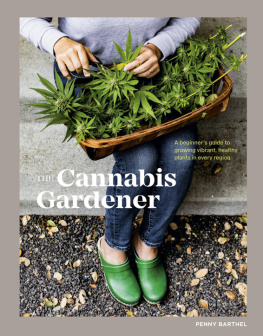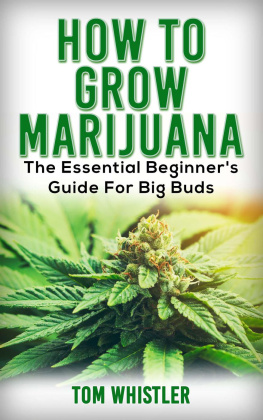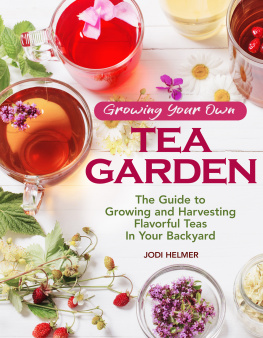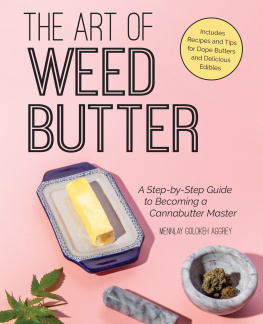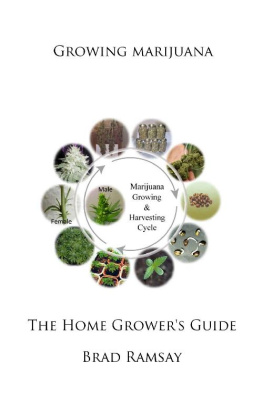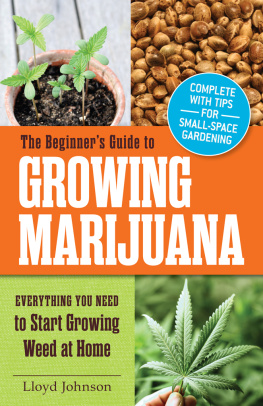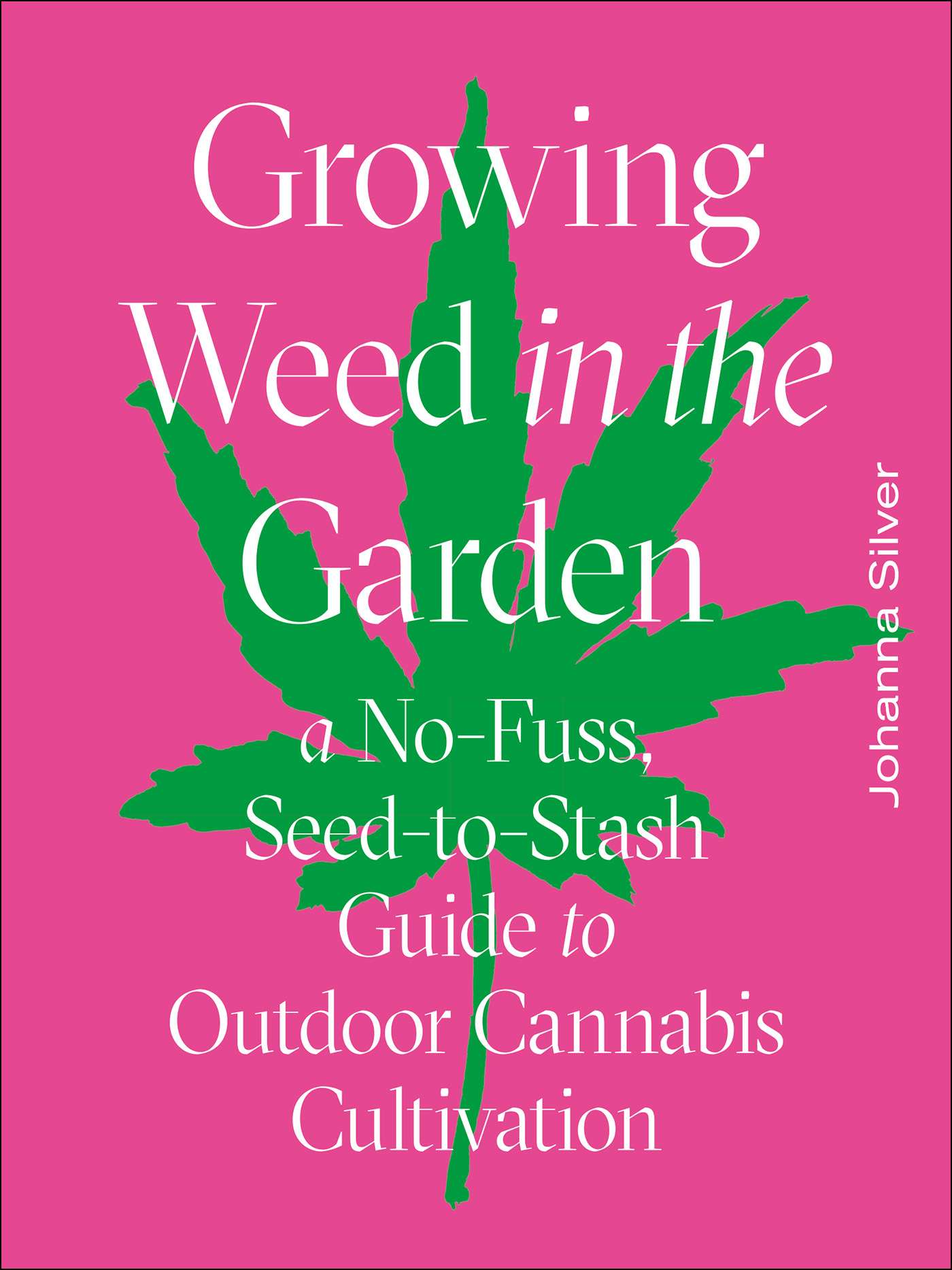
A cannabis seedling at the very start of its journey.
Preface
Full Transparency
I need to come clean to you. I am not a stoner. Though I spent the last two years of high school smoking pot at Robinson Park in Denver, Colorado, during lunch hour, that phase of life has passed. Im barely a user. My brother in New York City, a weed lover if there ever was one, keeps my usage from falling off the map entirely when we get together.
That Id ever write about cannabis was completely unexpected. Id gotten laid off as garden editor of Sunset magazine in late 2017, and I had every intention to keep writing about plants. Included on my short list of contacts was Kitty Morgan, who had served as editor in chief of Sunset during a stretch of my decade there. She had landed as the assistant managing editor of the San Francisco Chronicle. Kitty is fierce, creative, and a fantastic editor. I told her Id love to write for her again, assuming the assignment would be something in my wheelhousebackyard design, edible gardening, or container refreshes.
Instead, she told me she wanted me to grow weed in my backyard and document it as a gardener. I dont even know where to get seeds, I told her. Thats your opening line! she exclaimed.
Proposition 64, which made recreational cannabis use legal in California, was weeks away from going into effect, and the Chronicle, along with all other media, was confronted with how to tackle the subject in this new world.
My early googling quickly revealed that cannabis is dioecious, meaning there are separate male and female plants. This means not only do you have to learn how to sex plants, a phrase that was enough to pique my interest, but also that a worthwhile crop relies on having no male plants in the garden. Do you know how rare dioecious crops are? Let me tell you: rare. Kiwi, asparagus, and spinach are all dioecious, but there is no other summer annual that fits the bill. Can you imagine starting your tomato seeds, having to learn to tell the difference between male and female plants, and then having to kill half of them? The nerdy gardener in me was hooked on that unique factor alone.
The plot thickens. At the time of writing, pot is projected to be a $5 billion industry in California alone, just behind dairy ($6 billion), almonds ($5.5 billion), and ahead of grapes ($5 billion). Yet its never gone through a modern-day breeding program to select for things like disease resistance or seed stability. Again, mind blown. And its medicinal valuethough heralded as being helpful for everything from pain to canceris barely understood. There is nothing else in the world so widely grown but so little understood and yet-to-be-studied.
As the project unfolded and I wrote for the Chronicle, I came to know a handful of farmers in Humboldt and Mendocino Counties (aka the Emerald Trianglethe region that produces the majority of the weed grown in the United States) and met families greatly impacted by the fact that this plant was illegal for the last one hundred years. It was at this point that I stopped regarding this project as a hilarious adventure and started taking it a bit more seriously. Were talking about peoples stories, peoples livelihoods, peoples crafts. How this plant is written about and valued in our culture matters.
I ordered every cannabis book ever written as a supplement to my own research. What quickly became apparent is that they are written primarily for indoor growers. They read like electrician handbooks, not gardening manuals. Any nod to outdoor cultivation is mostly about security concernswhat breed of dog barks loudest, what type of tape to line the soles of your shoes with to hide your tracks, and what type of fence is most private. Though Ive grown to appreciate that these security concerns are a real issue for people growing in clandestine settings, those conditions didnt match my own.

All roads in Mendocino, Humboldt, and Trinity Counties lead to weedyou just have to know where to look (and its probably a good idea to secure your invitation first).
I simply wanted to grow a few plants in my garden. Because I could. Easy-to-understand, jargon-free information was hard to find. Ive written this book for anyone remotely curious about growing cannabis casually. I wasnt able to relay even a fraction of what I learned about the process of growing weed in my pieces for the newspaper, and that left me feeling like I had much more to sharespecifically, accessible information for every step of the process, from cultivar selection to finished product. I also wanted to share profiles of some growers who each deepened my appreciation for the plant and proved that theres no one type of cannabis fan. I know the hunger for information is out there, and here youll find it in full detail and accompanied by beautiful outdoor photography. Im not interested in maximizing yields. Im not buying expensive lights or odor-masking filters. Im certainly not going to be buying any chemicals, which Ive never done for anything Ive grown (except houseplantsI will own up to using Miracle-Gro on houseplants). I include the simplest, most effective techniques that involve the least amount of equipment.
Heres the thing about learning to grow weed: If you learn from a pot- centric person, youre going to pick up a strange language. Prohibition forced breeding and growing undergroundand indoors. Youll hear about clones and strains and vegetative states. That lingo a) makes the whole thing seem complicated, and b) doesnt translate well to any other plant you might want to grow (clones are otherwise called cuttings, strains is the wrong word for cultivars, and vegetative state just means growing).
Weed is unlike anything Ive ever grown. Not because its so complicated, but because its funthe smells are out of this world, its sticky as can be, and it grows faster than all get-out. Its not the hardest thing you can grow. Spoiler alert: Its called weed for a reason.
Im not a perfectionist. Im not a control freak. I believe that gardeningweed or basil or tomatoes or peoniesshould add richness to your life, not stress. I want this book to empower you and also to relax you, as I hope all gardening does. As my boss at the first farm I ever worked at told me over and over, Plants want to grow. Have a little faith. Youve got this.



